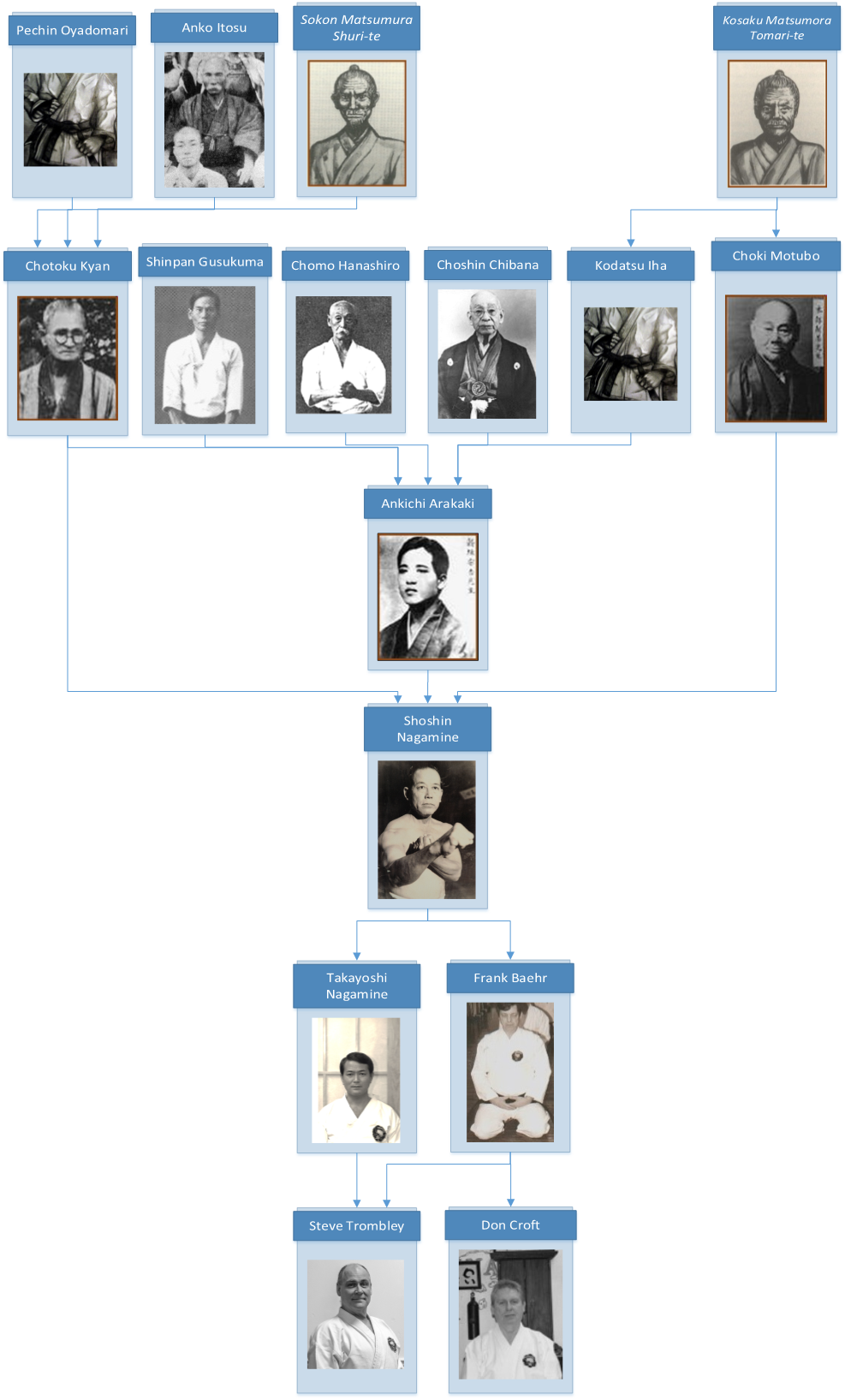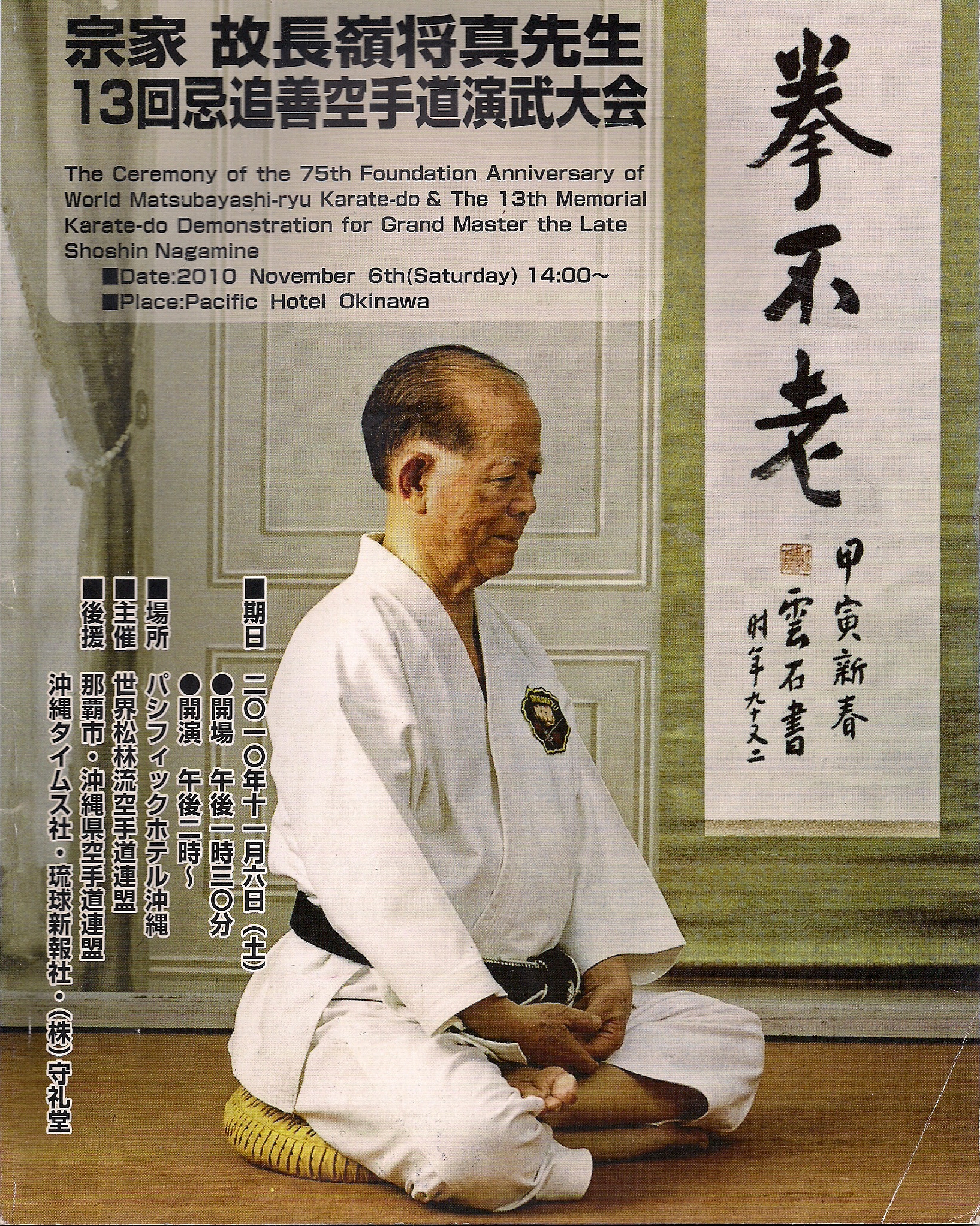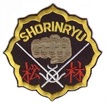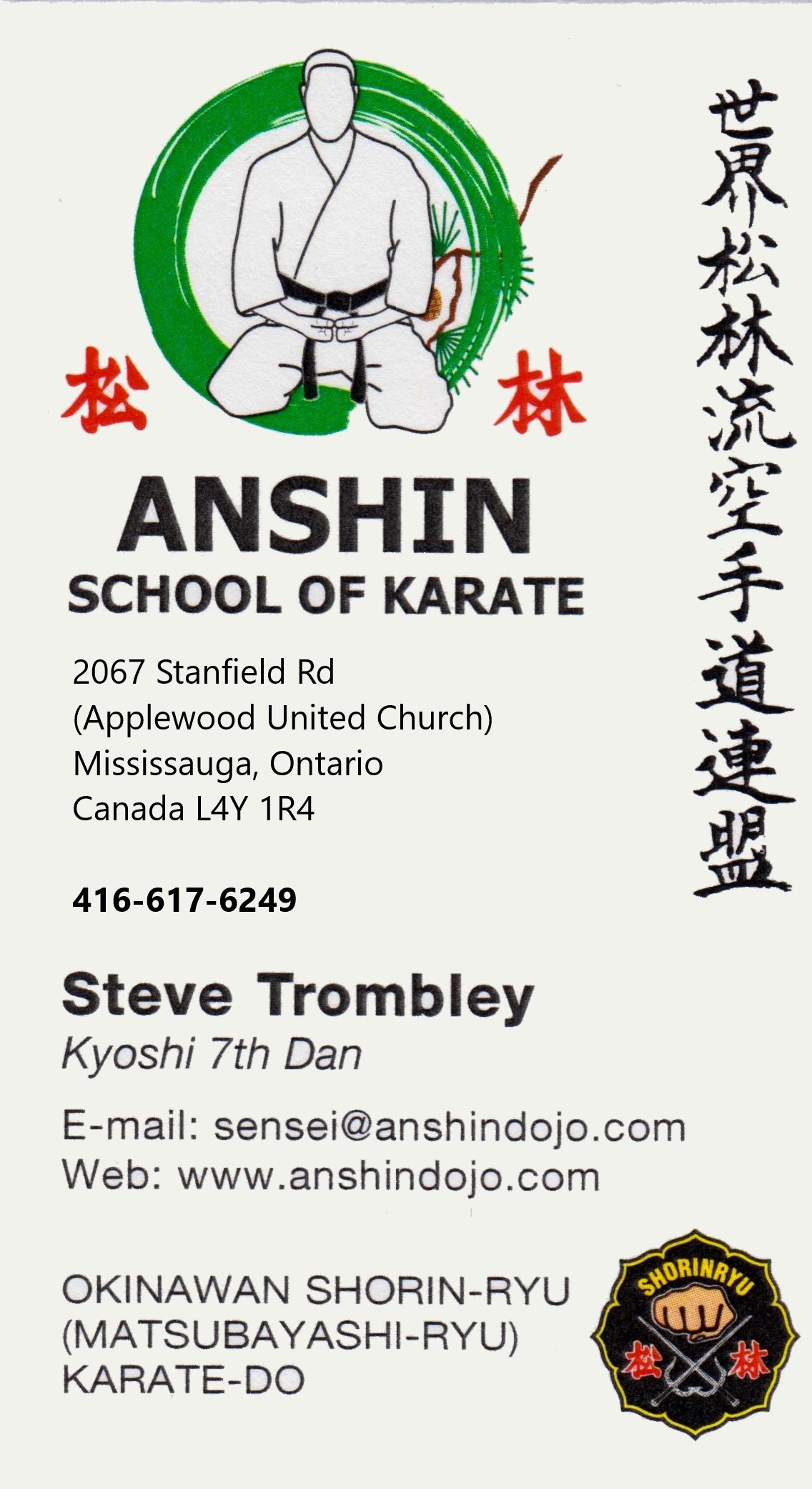Matsubayashi-ryu Karate
A History....
The Philosophy of Karate
"karate ni sente nashi"
There is no first attack in karate
“Karate is self-training in perfection...It is a training in efficiency. It is a training in self-reliance...for it enables a person to meet any situation with exactly the right expenditure of effort...and it gives him control of his otherwise wayward mind so that neither physical danger from without nor rampant passion from within can dislodge him.”
(Nagamine, 1998, p.14)
Originally developed by the Okinawans as a form of weaponless self-defence, karate was meant to represent a world without war. For the Okinawans, karate is not about competition or sparring, medals or violent sport; it is training for the sake of training – a way to broaden the mind and body.
Brief History of Karate-Do
“The martial arts originated from the instinct of self-preservation, and ultimately aim at building a well-balanced person of sound mind and body through continuous practice. It is here that the spirit of karate-do lies.”
(Nagamine, 1998, p.22)
The art of karate was passed on by oral tradition and hand-to-hand teaching from generation to generation. It does not have a definitive history, but relies on fragments of historical documents and oral tradition to piece together an interpretation of its development.
Okinawans first developed a self-defence art called te, literally meaning hands. Te predates karate. In 1609, the Satsuma clan of Japan subjugated the Ryukyu islands and banned all weapons and practice of martial arts. Despite this 300 year ban, te was practised in secrecy between midnight and dawn in the most remote places and so it was preserved and passed down from father to son in the samurai class.
Karate became popularized in 1904 when Anko Itosu introduced as a mandatory physical education requirement in public schools in Okinawa. In 1922, karate was introduced to mainland Japan, and over the next two decades, karate seized being a hidden martial art and became widespread within Japan and around the world.
The History of Matsubayashi-ryu Karate
Matsubayashi-ryu karate was founded by Osensei Shoshin Nagamine, Hanshi 10th Dan, in 1947. Matsubayashi is part of Shorin-ryu, one of the two-original Okinawan styles of karate.
Osensei Shoshin Nagamine has studied karate since the age of 17. His most influential teachers were: Ankichi Arakaki, who highlighted the relationship between karate and Okinawan culture, but also possessed a scientific attitude towards martial arts while illuminating the beauty of karate as an art form of cultural expresion. Chotoku Kyan, who taught him that constant hard work and a strong will, through constant practice is important towards the mastery of karate, and Choki Motobu, whose very unique balance between kata (forms) and kumite (sparring) inspired a new outlook on kumite and the creation of new ideas, such as the seven basic forms of kumite in Matsubayashi-ryu...

The Meaning of Matsubayashi-ryu
Shorin-ryu and matsubayashi-ryu are often used interchangeably. Looking at the kanji:

Matsu - Hayashi
(sho) - (rin)
pine tree - forest


The Philosophy of Karate
"karate ni sente nashi"
There is no first attack in karate
“Karate is self-training in perfection...It is a training in efficiency. It is a training in self-reliance...for it enables a person to meet any situation with exactly the right expenditure of effort...and it gives him control of his otherwise wayward mind so that neither physical danger from without nor rampant passion from within can dislodge him.”
(Nagamine, 1998, p.14)
Originally developed by the Okinawans as a form of weaponless self-defence, karate was meant to represent a world without war. For the Okinawans, karate is not about competition or sparring, medals or violent sport; it is training for the sake of training – a way to broaden the mind and body.
Brief History of Karate-Do
“The martial arts originated from the instinct of self-preservation, and ultimately aim at building a well-balanced person of sound mind and body through continuous practice. It is here that the spirit of karate-do lies.”
(Nagamine, 1998, p.22)
The art of karate was passed on by oral tradition and hand-to-hand teaching from generation to generation. It does not have a definitive history, but relies on fragments of historical documents and oral tradition to piece together an interpretation of its development.
Okinawans first developed a self-defence art called te, literally meaning hands. Te predates karate. In 1609, the Satsuma clan of Japan subjugated the Ryukyu islands and banned all weapons and practice of martial arts. Despite this 300 year ban, te was practised in secrecy between midnight and dawn in the most remote places and so it was preserved and passed down from father to son in the samurai class.
Karate became popularized in 1904 when Anko Itosu introduced as a mandatory physical education requirement in public schools in Okinawa. In 1922, karate was introduced to mainland Japan, and over the next two decades, karate seized being a hidden martial art and became widespread within Japan and around the world.
The History of Matsubayashi-ryu Karate
Matsubayashi-ryu karate was founded by Osensei Shoshin Nagamine, Hanshi 10th Dan, in 1947. Matsubayashi is part of Shorin-ryu, one of the two-original Okinawan styles of karate.
Osensei Shoshin Nagamine has studied karate since the age of 17. His most influential teachers were: Ankichi Arakaki, who highlighted the relationship between karate and Okinawan culture, but also possessed a scientific attitude towards martial arts while illuminating the beauty of karate as an art form of cultural expresion. Chotoku Kyan, who taught him that constant hard work and a strong will, through constant practice is important towards the mastery of karate, and Choki Motobu, whose very unique balance between kata (forms) and kumite (sparring) inspired a new outlook on kumite and the creation of new ideas, such as the seven basic forms of kumite in Matsubayashi-ryu...

The Meaning of Matsubayashi-ryu
Shorin-ryu and matsubayashi-ryu are often used interchangeably. Looking at the kanji:
Matsu - Hayashi
(sho) - (rin)
pine tree - forest



